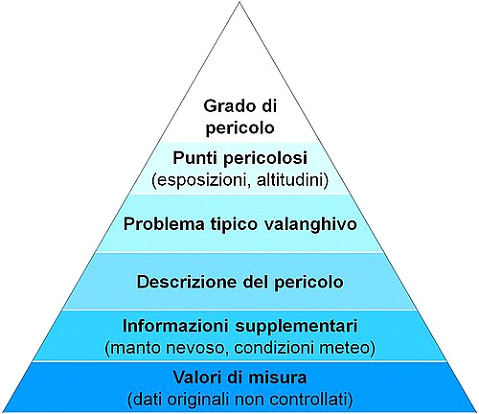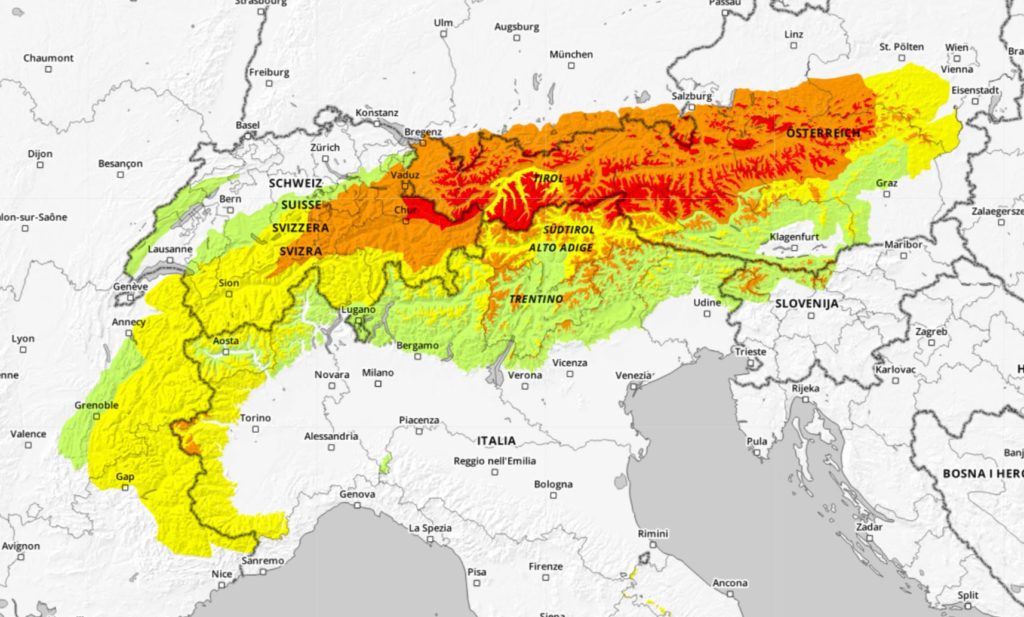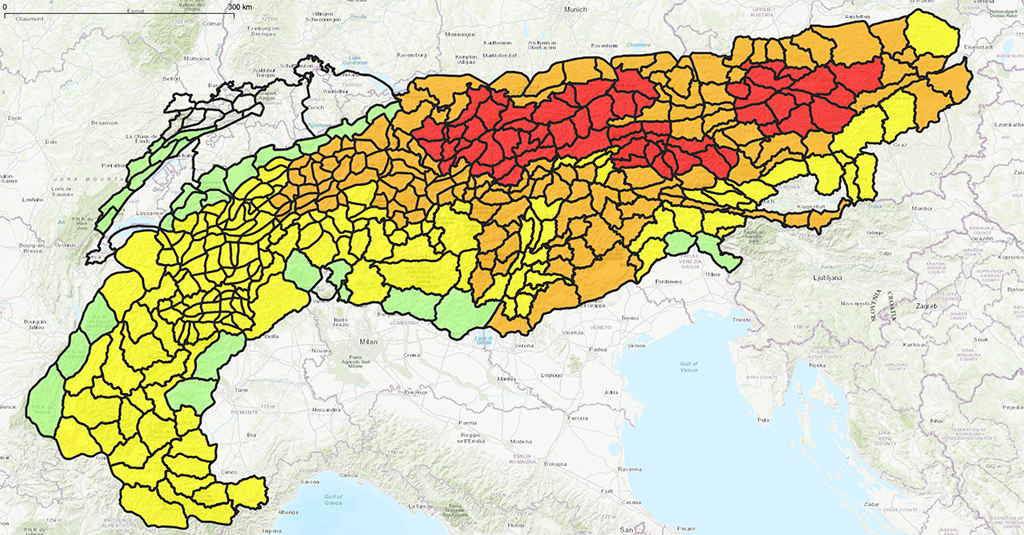Borders exist only in our heads
We are three of us on the Dreiländerspitz in the Silvretta region. One of us in Tyrol, one in Vorarlberg, one in Graubünden. We are in two different states and in three different administrative zones. Depending on the direction in which we descend, a different avalanche forecast applies. The SLF in Switzerland assigned a danger level one, the avalanche warning service Vorarlberg a two and the Tyroleans even defined a three. There is no apparent reason for these differences, as the meteorological conditions in the region around this border mountain were almost identical throughout the winter.
Nature is limitless
The mountains know no administrative borders. The same applies to the snow and avalanche situation. However, 17 avalanche warning services publish different avalanche forecasts, measuring station data, avalanche analyses and other information on very different channels.
Standardized but subjectively interpreted differently
 The European avalanche warning services rely on the standardized European Avalanche Danger Scale. However, the scale is applied more or less inconsistently. In practice, there are always striking differences. The presentation of the forecasts with respect to the information pyramid is also is not handled uniformly. In the end, winter sports enthusiasts are often confronted with contradictory information under the same conditions.
The European avalanche warning services rely on the standardized European Avalanche Danger Scale. However, the scale is applied more or less inconsistently. In practice, there are always striking differences. The presentation of the forecasts with respect to the information pyramid is also is not handled uniformly. In the end, winter sports enthusiasts are often confronted with contradictory information under the same conditions.
Future vision
That is why we have a vision. We would like to have a consistent, as far as possible homogeneous and multilingual avalanche forecast for the entire Alpine region. Identical presentation, no major differences in the use of danger levels, no man-made but only natural limits.
This vision could look as follows:

- Best possible orientation of the avalanche forecast to the needs of snow sports enthusiasts, since they make up the vast majority of avalanche victims.
- Consistent use of the danger level. A work by Techel et. al. (2018) shows that there is a need for action here, since different warning services often assign different danger levels for similar situations.
- Consistent and complete use of all elements from the information pyramid (Fig. 2).
- Multilingualism: At least one local language plus English.
- Harmonization of the output time in the evening (e.g. 18h) with optional update in the morning (e.g. 8h).
- Uniform presentation on a dynamic map covering the entire Alpine arc.
- Similar processes in the generation of the avalanche forecast. Only comparable processes can produce comparable results.
- Similar size of the warning regions, which can then be flexibly aggregated into warning areas.

If it were easy, it would not be a challenge
We are very appreciative to the avalanche warning services for their meticulous work they do every day. Likewise, we are aware that tremendous efforts have been and are being made to converge. We also know how difficult cross-border cooperation is and how different the resources of the individual warning services are. But we also believe that there is still a need for action.
Where a will, there a way
These are not illusions. The Euregio Avalanche Report project in Tyrol (Austria), South Tyrol and Trentino (both Italy) has already shown that even international standardization is possible. The very pleasing progress made in recent years with the cross-regional presentation also shows that cooperation can work if all actors from politics to avalanche warners pull together.
Hence the initiative for an alpine-wide uniform avalanche forecast. We would like to point out how important cooperation in the field of avalanche warning is. After all, even a single human life saved in this way is worth more than all the resources invested.
If you would like to join us, please feel free to share, quote and link to this article.
